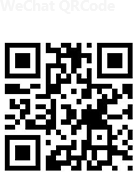-
 +86 0755-89302056
+86 0755-89302056 -
 Building 6, Jingneng science and technology environmental protection industrial park, No. 3, Baolong Second Road, Longgang District
Building 6, Jingneng science and technology environmental protection industrial park, No. 3, Baolong Second Road, Longgang District
Battery top cover side welding laser welding automated production line solution 1
1. Customer requirements
1. Equipment requirements
It is required to build a production line for automatic transmission of square power batteries after they are put into the case, automatic welding and sealing, automatic battery transmission, automatic insulation resistance testing, automatic air tightness testing, and automatic barcoding. After welding, the surface of the product must be smooth, the welding must be firm, and there must be no false welding. The welded battery is shown below.
Solution Reference-Battery top cover side welding laser welding automated production line solution
2. Incoming material status
(1) The battery is inserted into the case, and the cage and the lower end surface of the cover plate are closely aligned;
(2) The periphery of the cover plate matches the periphery of the casing;
(3) Incoming material: AL
(4)Incoming material size
2. Incoming material requirements:
1. Width dimension accuracy <±0.1mm;
2. Thickness and dimensional accuracy <±0.1mm;
3. The cover and the shell fit well
3. Technical solutions:
3.1. The plan uses two welding machines for welding, two testing machines for testing, and an assembly line for battery transmission. The assembly line is divided into several flow channels. The overall appearance of the equipment is shown in Figure 1. The overall dimensions of the machine are 11000mmX2500mmX2000mm (length X height);
Solution Reference-Battery top cover side welding laser welding automated production line solution
Figure 1 Overall appearance of the equipment
3.2. Introduction to welding scheme
Aiming at the welding requirements of power battery boxes and end covers, this solution consists of laser welding machines, battery testing machines, online marking machines, automatic assembly lines and other units. Its function is to sequentially complete battery welding, short circuit testing, air tightness testing, battery marking, automatic rejection of NG products and other related processes.
The laser welding machine consists of two sets of lasers, laser welding heads, XYZ three-axis CNC axes, rotating fixtures, two-station drive shafts, follow-up mechanisms, and four-joint manipulators for loading and unloading. Its main function is: using a double-station upper the material loading method enables the four-sided welding of the square battery to be completed at one time.
The battery testing machine consists of short circuit test components, air tightness test components, turntable components, four-joint manipulator loading and unloading, online laser marking and other mechanisms. Its main function is to clamp the battery after welding on the assembly line to the turntable component in the fixture, they are short-circuited and air-tightly tested in sequence, and the qualified products are marked. After the inspection and marking are completed, the good and defective products are placed into the corresponding tracks of the assembly line.
The marking machine has an adjustment mechanism that can be adjusted to the appropriate marking position.
The automatic assembly line is composed of plate chains, tracks, baffles, positioning cylinders, storage cylinders, etc. Its main function is to drive the battery to the corresponding position and has the function of storing materials.
The salient features of this program are:
1. Two sets of fiber optic laser systems are used for welding, which are divided into two welding workstations A and B. Both workstations have two welding stations to improve welding efficiency;
2. Each of the two welding workbenches is equipped with a four-joint manipulator for loading and unloading materials, and two stations for loading and unloading materials, which improves the feeding efficiency. The welding area and the loading area are completely separated to ensure the personal safety of the operators;
3. The equipment is equipped with two inspection machines A and B, which use four-joint manipulators for loading and unloading to improve inspection efficiency;
4. Equipped with a smoke and dust treatment system to effectively prevent smoke and dust pollution.
4. Introduction to equipment functions
1. Transmission strap
- The transmission strap is used to transfer the battery vertically after being inserted into the case to the welding and testing station, with a length of 11000mm;
- The pull strap has a limit device and a buffer area for storing batteries;
-The number of batteries that can be stored in the loading and unloading buffer areas is ≥10;
- The pull strap is easy to maintain and repair; the pull strap is reasonably designed to avoid scratches on the battery during transportation;
-The straps are divided into multiple strips and are used to transport each sub-battery.
Tel:+86 0755-89302056
+86 0755-85200585
Address:Building 6, Jingneng science and technology environmental protection industrial park, No.3, Baolong Second Road, Longgang District. Shenzhen.China




